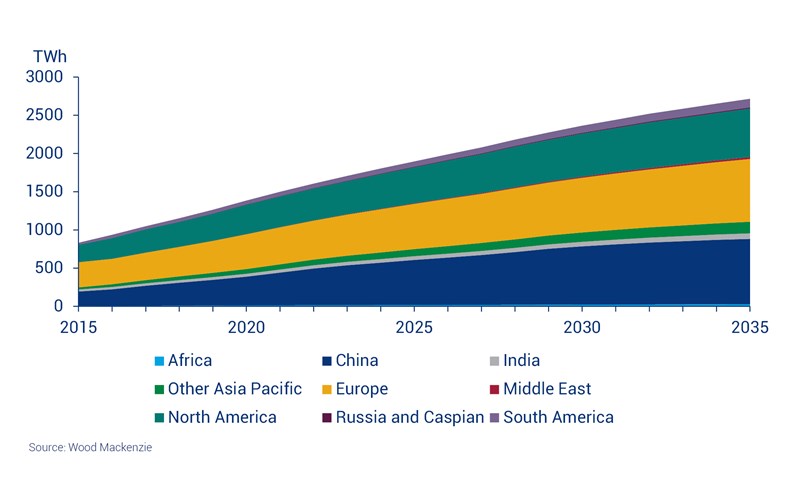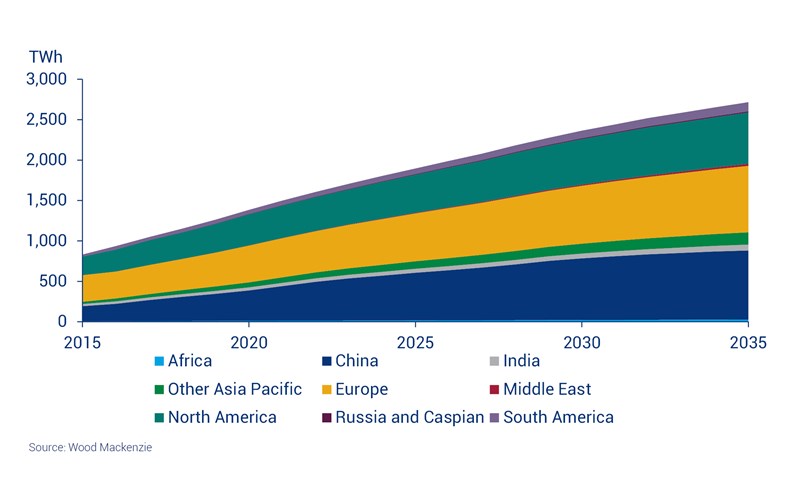Discuss your challenges with our solutions experts
Energy systems have been transformed by regulation and the progress of technology. Global awareness of climate change will only accelerate this trend, increasing the rate of growth of alternatives to fossil fuels the world over.
Renewables are playing an expanding role in the global energy transition and will continue to reshape electricity markets. With low marginal cost and priority feed-in to grid systems, renewables can squeeze conventional generators out of the market and drive severe short-term price swings.
The effect remains marginal but, as soon as the share of renewable energy in the power mix reaches critical mass, it can bring serious disruption. This is already the case in some European countries, such as Germany and the UK, and will impact coal generation in the US from 2020 and gas generation in Europe beyond 2025.
Global supply growth for renewables is the fastest in the energy mix, reaching an average of 7% per year between 2015 and 2035 for wind and 11% for solar. These positive figures cannot hide the fact that their rapid increase is from a relatively low base, but renewables have often surprised to the upside in recent years — a trend which could continue.
Global growth differs by location due to different climate conditions and the ability of technologies to suit the needs of local populations. In geographically-advantaged countries, the share of renewables in the power mix grows exponentially. India, for example, has ambitious solar targets and we expect an increase from 3% of total power generating capacity in 2015 to more than 35% in 2035.
Meanwhile, wind power remains the prerogative of developed and mature markets (with the exception of China). As fossil fuels and nuclear use slowly decline in Western Europe, we expect wind to become the largest source of electricity by 2030 at around 21%.
Asia will also see renewables develop steadily, driven by a will to cut CO2 emissions in the mature markets of Japan, South Korea and Taiwan, or as a result of a steep increase in power demand in the case of South East Asia.
In China, despite slower power demand growth, solar and wind will develop at a fast pace, reaching 7% and 18% of total electricity output respectively. We also forecast nuclear output to expand here more than tenfold between 2015 and 2035 — a stark contrast to many other countries, where nuclear remains unpopular.
With technology continually improving, renewables are no longer simply regarded as the expensive green option but are now considered serious competition. It's clear that renewable energy is in a strong position to force the market to reshape.







